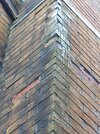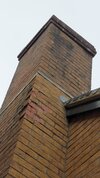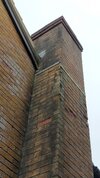My mum's house has a number of spalled bricks (these from the chimney breast).
Some are also going below damp proof course in some areas.
My dad got the gable end rendered when he was alive because it got so bad.
The house is 30-odd years old, and the bricks seem to be crap, to be fair.
What should I do to prevent this happening? I am assuming I should replace spalled bricks, but should I also look to treat the walls as well?
Some are also going below damp proof course in some areas.
My dad got the gable end rendered when he was alive because it got so bad.
The house is 30-odd years old, and the bricks seem to be crap, to be fair.
What should I do to prevent this happening? I am assuming I should replace spalled bricks, but should I also look to treat the walls as well?





